Would you rather be quiet or accurate? Do you have to choose between them or do this two concepts coexist like politicians and sex scandals?
Not so long ago, I competed in an F-Class match, shooting at a distance of 800 yards. One thing that stood out was the competitors’ finicky attention to muzzle devices, or more accurately, the lack thereof. First, F-class allows none, so there’s that. Second, the chatter on the firing line was that muzzle devices like brakes, flash hiders, and suppressors only reduce the accuracy of a rifle. I have no reason to doubt that, but it did get me thinking.
Would my everyday rifle configurations be more or less accurate with a suppressor? These aren’t tweaked out F-Class race guns. I use them for plinking, less-rigid competition, home defense, and denting steel plates. As an experiment, I decided to compare the accuracy of a couple of rifles outfitted with the standard muzzle device – a flash hider or brake – with the same rifles and ammo geared up with one of my suppressors. Just to be clear, suppressors can help you shoot more accurately because they reduce the blast, noise, and smooth out recoil. That helps the shooter focus on breaking a perfect shot with less noise and distraction. What I was looking for here was any “mechanical” impact on accuracy, not my ability to shoot better using a can.
To keep optical and wind error out of the picture, I shot a boatload of five-shot groups in each configuration at 100 yards. Yes, there might be some stabilization differences that show at longer distances, but then I would be adding more weight to other variables like wind and my eyes.
Again to try to minimize some variables, I aimed for “warm barrel” scenarios. After some sighters to get on paper, I alternated rifles to give each a chance to cool back down after each five-shot group. By resting the rifles and taking my time, I figured I would stay in the “warm” range and not run into accuracy issues from some groups coming from cold, warm, and smoking hot barrels.
Let’s take a look at some results.
Masterpiece Arms MPA BA Lite with SIG Sauer OTM Match Grade 6.5mm Creedmoor
OK, so maybe this isn’t an everyday rifle for plinking and home defense, but I like to shoot it. Don’t judge. On the other hand, it’s amazingly consistent. It’s also built from the ground up for pure accuracy. Potentially offsetting factors like weight and semi-automatic operation aren’t going to interfere with its accuracy mission. I had a hunch that this one might just shoot better out of the box before sticking a suppressor on the end but there was only one way to find out.
I used Sig Sauer’s brand new OTM Match Grade 6.5mm Creedmoor ammunition. Based on my previous experience with the accuracy of Sig’s match ammo, I had high expectations. This load with its 140-grain open-top boat tail projectile didn’t disappoint.
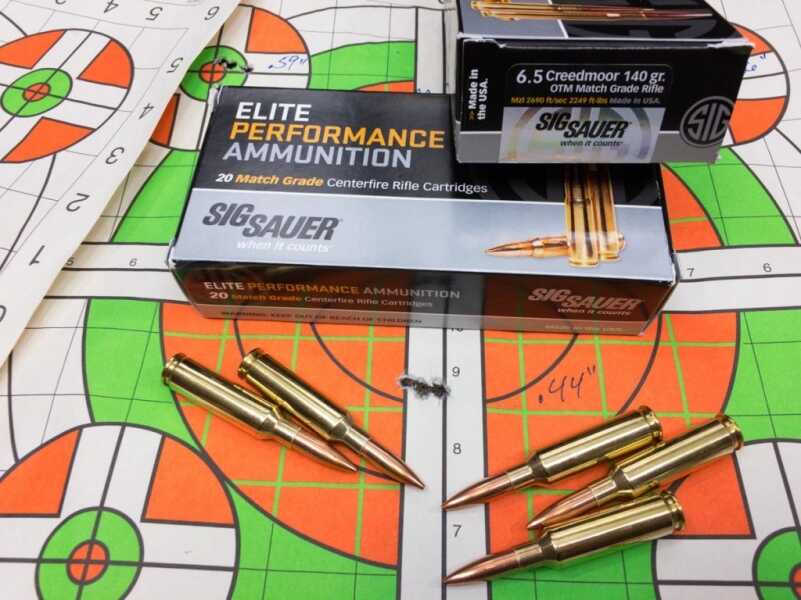
Sig Sauer’s brand new 6.5mm Creedmoor OTM Match Grade ammo shot like a champ from the Masterpiece Arms MPA BE Lite rifle. This is a five-shot group from 100 yards.
I shot a bunch of five-shot groups from 100 yards with only the default muzzle brake in place. As you can see from the photo, this brake is a beast. It’s about the size and weight of a grenade and makes a similar concussion. The Range Officer was convinced I was shooting a .338 Lapua Magnum until I showed him the comparatively small 6.5mm Creedmoor cartridges.
I also shot a bunch of groups after removing Brake-Zilla and adding a SilencerCo Specwar 762 suppressor. Also a quality piece of gear, this can makes a great impact weapon in a pinch. Over the years I’ve had it, I’ve found it to be consistent regarding point of impact shift and consistency.
Here’s what I found.
Shooting in the factory configuration, my overall average group size came out to 0.63 inches with a best five-shot group of just .44 inches. That ain’t shabby, and I have to say I was pleased with the performance of the new Sig 6.5mm Creedmoor ammo. For factory ammunition not sized to a specific chamber, that’s pretty darn good.
After I added the suppressor, my group size actually increased as I suspected it might on this particular rifle. After all, it’s built just so for accuracy, and monkeying around with weight on the end of the barrel, as heavy as it is, probably isn’t going to help things. My overall average five-shot group size worked out to 0.90 inches with the smallest group of .80 and largest of 1.01 inches at 100 yards.
Smith & Wesson M&P 10 Performance Center 6.5mm Creedmoor with Sig Sauer OTM Match Grade
Next, I decided to move to a more “everyday” rifle configuration. In past tests, I’ve found this Smith & Wesson M&P 10 Performance Center model to be a consistent and accurate rifle. I repeated the process, keeping the rifle in the “warm” range while firing all of my five-shot groups from 100 yards.
Because tinkering is fun, I had added a Smith Enterprise Vortex Flash Eliminator to this rifle, so I elected to leave that as the “default” instead of the factory flash hider. My overall average group size with the flash hider installed was 0.98 inches with the smallest group being 0.75 inches and the largest 1.14 inches.
I added the same SilencerCo Specwar 762 can that I used on the Masterpiece Arms rifle and proceeded to burn more Sig Sauer ammo. The overall group size? It was 1.03 inches with a smallest of 0.97 inch and largest of 1.12 inches.
To properly use the words “statistically the same” I would have to burn a few thousand round of ammo, but indications were that this rifle really didn’t care between these two configurations with the Sig Sauer 6.5mm Creedmoor ammo.
Expanded Testing
Being curious, I decided to informally expand my testing a bit on this one. I shot some group using American Eagle’s 140-grain Open Tip Match ammo with and without a Gemtech Tracker suppressor. The Tracker is a lightweight model designed for low-volume hunting applications so I figured I might see some more variance with that. I did. My unsuppressed group average was 1.09 inches while the Tracker suppressed groups averaged out to 1.255 inches.
Hmmm. So this rifle wasn’t as happy with a lightweight can. That didn’t surprise me. Next, I decided to go back to my original “heavy suppressor” configuration and swap ammunition. I had worked up a batch of handloads using the Hornady 140-grain ELD bullets, so I tried those unsuppressed and with the Specwar 762. Unsuppressed, my average group size was 1.02 inches. When I added the suppressor, the average group shrank to .65 inches.
Summary
It seemed there were conflicting results depending on the combination of rifle, suppressor, and ammo. Here’s how it all netted out.
| Rifle | Ammunition | Muzzle Configuration | Average Group Size |
| Masterpiece Arms MPA BA Lite | Sig Sauer OTM Match Grade 6.5mm Creedmoor | Factory Brake | .63” |
| Masterpiece Arms MPA BA Lite | Sig Sauer OTM Match Grade 6.5mm Creedmoor | SilencerCo Specwar 762 | .90” |
| Smith & Wesson M&P 10 PC | Sig Sauer OTM Match Grade 6.5mm Creedmoor | Smith Enterprise Vortex Flash Eliminator | .98” |
| Smith & Wesson M&P 10 PC | Sig Sauer OTM Match Grade 6.5mm Creedmoor | SilencerCo Specwar 762 | 1.03” |
| Smith & Wesson M&P 10 PC | American Eagle’s 140-grain Open Tip Match | Factory Flash Hider | 1.09” |
| Smith & Wesson M&P 10 PC | American Eagle’s 140-grain Open Tip Match | Gemtech Tracker | 1.255” |
| Smith & Wesson M&P 10 PC | Handload Hornady 140-grain ELD | Factory Flash Hider | 1.02” |
| Smith & Wesson M&P 10 PC | Handload Hornady 140-grain ELD | SilencerCo Specwar 762 | .65” |
VooDoo Review
So let’s boil this down into some probable explanations and learnings.
First of all, there’s clearly no universal takeaway from this limited experiment. Will your rifle be more accurate suppressed? Maybe. Or maybe not. It all depends on the combination of ammo, rifle, and suppressor.
The whole subject of barrel harmonics and what happens when you add objects of different weight to the fiery end is pure VooDoo. In theory, if the barrel moves in exactly the same way every time you pull the trigger, then precision should always correspond with the overall quality of the bore. Since the MPA BA Lite outperformed the suppressor configuration with its factory brake, I’d assume the smart folks at Masterpiece Arms designed the barrel brake to play nicely together. They certainly do. That might explain why I got larger groups by adding the SilencerCo Specwar with this rifle but smaller ones on a different rifle.
This is pure theory on my part, but I have to think that the suppressor mount will come into play. The SilencerCo Specwar 762 is a rock-solid system, but it uses a quick attach and detach mounting system. The suppressor threads onto the SilencerCo muzzle brake (or flash hider depending on what you choose) and then locks into place. Given that I got better accuracy results with the Silencer attached I have to assume that nothing is moving up front as the bullet travels down the barrel. However, I also have to conjecture that a rigid direct thread mount on a quality suppressor might perform even better. That might have to be a future project for a head to head quick attach versus direct thread comparison using the same suppressor, rifle, and ammo combination.
The Gemtech results have me a little stumped. The Tracker uses a direct thread attach, so it’s solid on the barrel once installed. I wasn’t surprised that it was less accurate. But only because of some general notion of “lighter and less expensive.” Why was it? Perhaps there’s some buffeting business going on as the bullet travels past the baffles. While that expanding gas cloud will be behind the bullet, the projectile is going to be pushing air on its own as it travels through the can. Is there a measurable accuracy impact from that compressed air hitting the suppressor interior? Does a less expensive can have more variance in the baffle construction that interferes with the compressed-air column? Got me. If you have thoughts on the matter, I’d love to hear them.
Lasting Impressions
While there’s not enough data here to prove the issue, I have to believe that quality and consistency of the suppressor itself will have a lot to do with the outcome. If there’s any merit to my buffeting theory, then the absolute consistency of the internal baffles would have an impact on precision shot to shot.
So, the answer is clear. Your rifle might be more accurate suppressed. Or it might not.
For more information about Smith & Wesson Performance Center, click here.
To learn more information about MasterPiece Arms, click here.
For more information about SIG Sauer’s Elite Performance Ammunition, click here.
To purchase a Smith & Wesson M&P Rifle on GunsAmerica, click here.

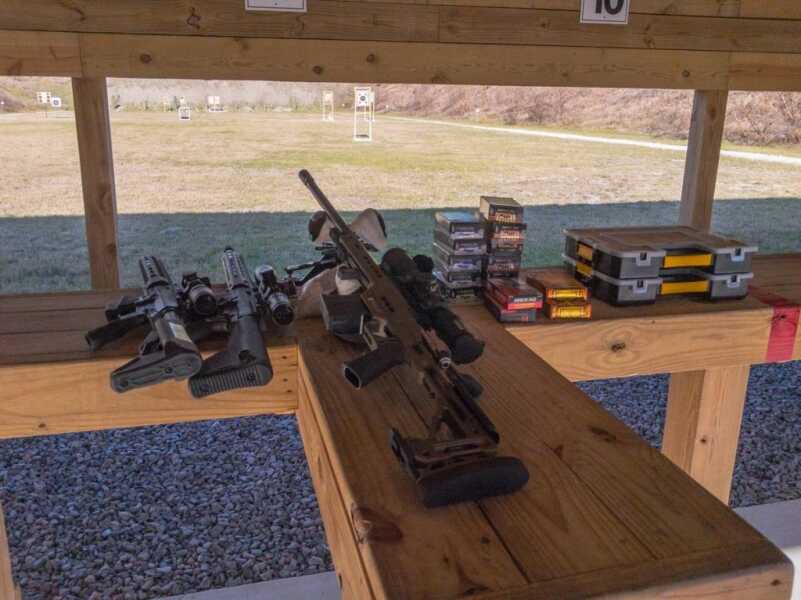
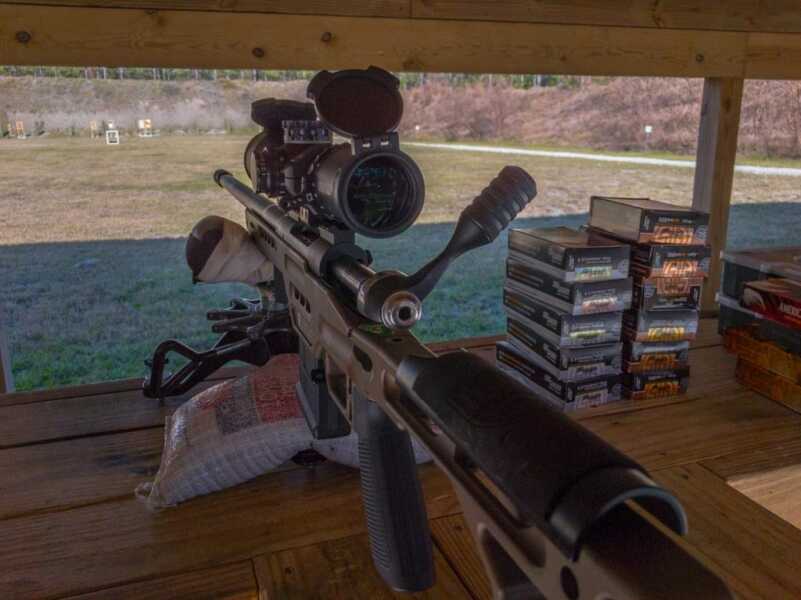
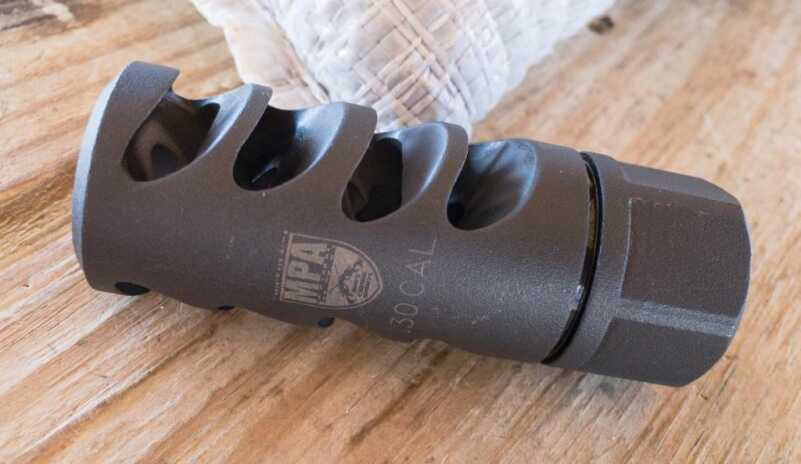
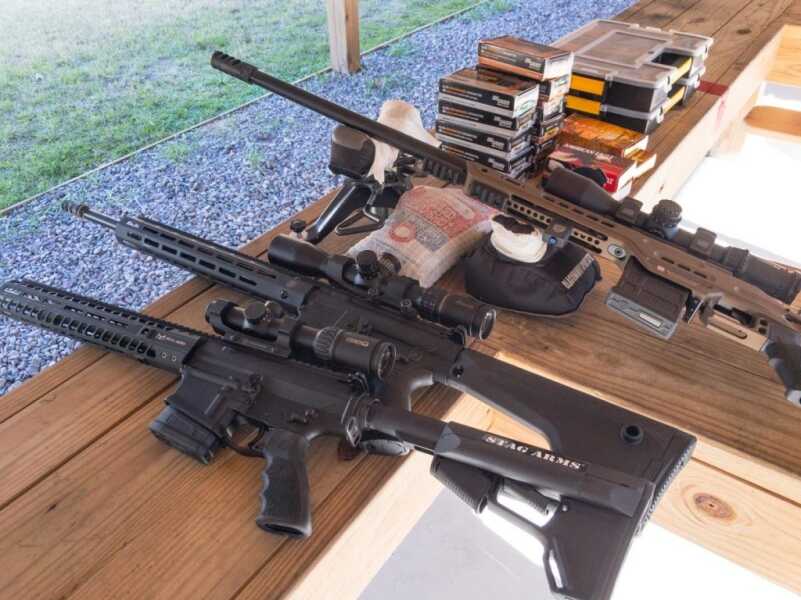
Your article assumes all suppressors or silencers behave the same. They don’t. Not even close. But if one does set up a harmonic in your gun, dampen it out by adjusting a limbsaver donut. OPS Inc. suppressors absolutely improve accuracy, and I have used them out to 850 yards on several guns. I would not shoot without one. Most suppressors have no engineering science to them. OPS Inc suppressors remove most of the barrel blast that the bullet travels through when exiting the barrel. The bullet is normally traveling backwards in the local atmosphere as it exits the barrel, destabilizing the bullet. Peel that atmosphere away, and the bullet immediately stabilizes. That makes it more accurate.
I once had a rifle that showed better accuracy when the thread protector cap (the type that threads on) on the business end of the tube was removed. (2 MOA @ 200 Yards) This just shows how sensitive barrel harmonics can be. What could it weigh? A couple of ounces? The problem was corrected by experimentation with the propellant charge. The rifle assembly is a given. The variable is the Ammo based on weight ( barrel twist) of the projectile, powder charge, brass used and care of assembly. There are also available, barrel weights now, that can be played with if all one has available is factory Ammo. The shooter seeking this type of accuracy is most likely a hand loader anyway and therein lies his salvation. One cannot adapt the firearm
( without a machine shop) to the Ammo but the loads can be tailored to compensate for the foibles of the go bang assembly. Give it a try, it’s cheaper than a new smoke stick.
From LOTS of experience with LOTS of different ammo, guns, suppressors, glass, AND shooting distances out to a mile plus, cans on balance are TOTALLY worth the time, money, and practice! Once you’ve invested in this medium, you’ll NEVER want to shoot an unsuppressed shooting platform of ANY kind EVER again!!!!
I would suggest conducting your test at 200 or 399 yards. My 6.5 Creedmor was sub MOA at 100 and 200 yards. Added a flash hider and the impact at 200 dropped 8 inch…..took the flash hider off and impact was back on center of the target. Nothing will effect a Creddmor accuracy at 100 yards but you will definately see the difference at longer ranges.. No attachments for Creedmor in the future based on my experience.
Hell I I’ve been waiting, let’s see They cashed my $200.00 tax stamp on 10/7 /2016 still waiting. Called last Fri got the run around oh talk to her got voicemail won’t be back till 1/9/18.
My son bought a suppressor to be used on his Buckmark and 10-22 Ruger and accuracy is all over the place. I wouldn’t have one, especially with the hoops you have to jump through to get one.
He is probably getting baffle strikes. Do you see any lead marks on the exit rim?
Good article. You really need to learn about the B.O.S.S., (Ballistic Optimizing Shooting System). I have one on my .22-250 Browning A-Bolt, built 25 years ago. Everyone told me the caliber was “finicky” and that I would have to find the right ammo to have any accuracy. With the BOSS and any ammo, I get five-shot groups you cannot get your little finger through, (at 100 yards). As you said, a suppressor will contract or expand your groups, depending on rifle, ammo, and suppressor.
One thing you did not examine was suppressor internal construction. Most suppressors use a milled-through design. That is, they are made by milling through a cylinder of metal, leaving the baffles in place. As you noted early in the article, varying gas pressures will tend to push a bullet in a particular direction, as will the interactions of shock waves from a supersonic bullet and the internal parts. Due to those effects, a milled-through design will cause the suppressor to ‘throw’ shots in a particular direction. Although the ‘throw’ direction will be the same , the magnitude will depend especially on the ammo. The only cure for this is to buy a radially symmetric suppressor.
Another effect can be caused by very small variations in how the suppressor contacts the barrel. If you have a piece of grit that causes a 0.001″ change in the contact of one side of the interface of the barrel and suppressor seat, it will result in a 0.040″ change in the relation of the bullet path and the exit-end of a 10″ long suppressor. Again the pressure and shock interactions can change your bullet’s flight.
You have absolutely NO idea how suppressors are made so best you keep quiet about their effects on accuracy. “Milled through:” LOL, completely and utterly clueless…
Well, you can listen to a troll, or you can watch it done for yourself. https://www.youtube.com/watch?v=Hyc37aHNZ7k
So why didn’t you test the barrel with nothing on the end of it at all?
When the BOSS first came out i thought it was just a marketing gimmick. i had a old shot out 98 Mauser and a 308 barrel collecting dust so i threaded the the barrel and made an imitation BOSS brake. I could not believe what a difference it makes. Moving the brake not only makes the groups larger or smaller but it also shifts point of impact. Once I got it dialed in for the smallest group it was a simple matter to zero the scope. An added bonus is that you can see your hits. When you pop a woodchuck you see him spin around and see the exit hole. The muzzle never rises enough that the rodent is out of the field of view of the scope. I find it hard to agree that a muzzle brake reduces accuracy when testing first with this, then with other custom tuned brakes has proven they actually enhance accuracy.
I agree. I did extensive testing on muzzle breaks back in the 70s when Robert Kleinguenther talked me into putting a couple on a 375 & 416 he made for me. The group sizes were basically the same, all 1/2″ or less, as guaranteed by RK, w/wo break. Point of impact was within an inch or so w/wo also.
Also, what he said about the muzzle climb is the reason “why” I put them on most dangerous game rifles. The 375 actually did not come up off the front rest at all. You never would loose site of your target/prey after your shot!
Now, you dam well better be wearing ear plugs when you shoot it cause it will flat hurt your ears!
As for suppressors, I was told by gunsmiths that make them & a couple of Marine snipers I was shooting with, if the rifle is made with the suppressor & tuned with it, then the harmonics can be adjusted to make it as accurate as without. Also, in general, they do not decrease accuracy in match grade rifles to any significant degree when just added. Sometimes change impact a little. But in general, very little change. No “personal” experience yet, but sure hope to be getting some soon, if the rinos get of their butts.
Hope they make them legal soon so we can get them easier, & when more people want them the prices will come down also.
Just an update. Was just talking to “expert” LR pistol/rifle champ buddy Boyd Carpenter & he reminded me that, in fact, when suppressor was installed when sniper/match rifle made & blueprinted with rifle, it was MORE accurate! Less movement, sound & other things to effect bullet exit. Forgot that when I wrote the above.
Just like each rifle has a preference for ammunition, they each have a preference for suppressors. No surprise here.
The barrel node and vibration theory, as applied to rifle accuracy, seems to be very reasonable. It is a fact that the mechanical system changes as you apply muzzle devices with different weights and attachments, and this changes the corresponding vibration characteristics. The results in this article point to what I was taught in my reloading for long range shooting class – you need to carefully explore which load gives optimum accuracy for the mechanical system that you have. To do that, you’d need to optimize the load for each muzzle device. Shooting the same ammo across different muzzle devices doesn’t do that. I’m looking forward to getting my suppressor when the ATF finally gets around to it and trying this out myself!
They are a waste of time, money and accuracy. The new novelty, save your money.
You are 100% correct. Adding something changes the barrel harmonics. That is the theory behind Browning’s BOSS system. Once mounted,it can be adjusted to be a little longer to change the harmonics. Once you find a load that varies little in velocity between shots, you then tune to BOSS to minimize barrel flip. It works.
Yes, No, Maybe. Glad that’s settled! Thanks for the test!
Hey NRA whatever happened to the HPA? Lets get it done, so I can buy a silencer without a 6 month wait, BS paperwork and a $200 tax. We’ve had 11 months of nothing, arguing over bump stocks which was already settled during the anti-gun Obama administration. No more excuses. We’ve got about another year before Congress flips again. Attach the HPA to a bill for funding for Israel, as they always go through like greased lightning.
Our great friend and protector Paul Ryan (RINO-Wisconsin) refused to let it get out of committee after the Vegas incident (even though that had nothing to do with suppressors). I’ve contacted my local congressman about it but he’s been mute too…
6 months wait? Wishful thinking! I would count on double that time.
I got my last form 1 suppressor approved on November 5th, 2017, after waiting over 15 months!